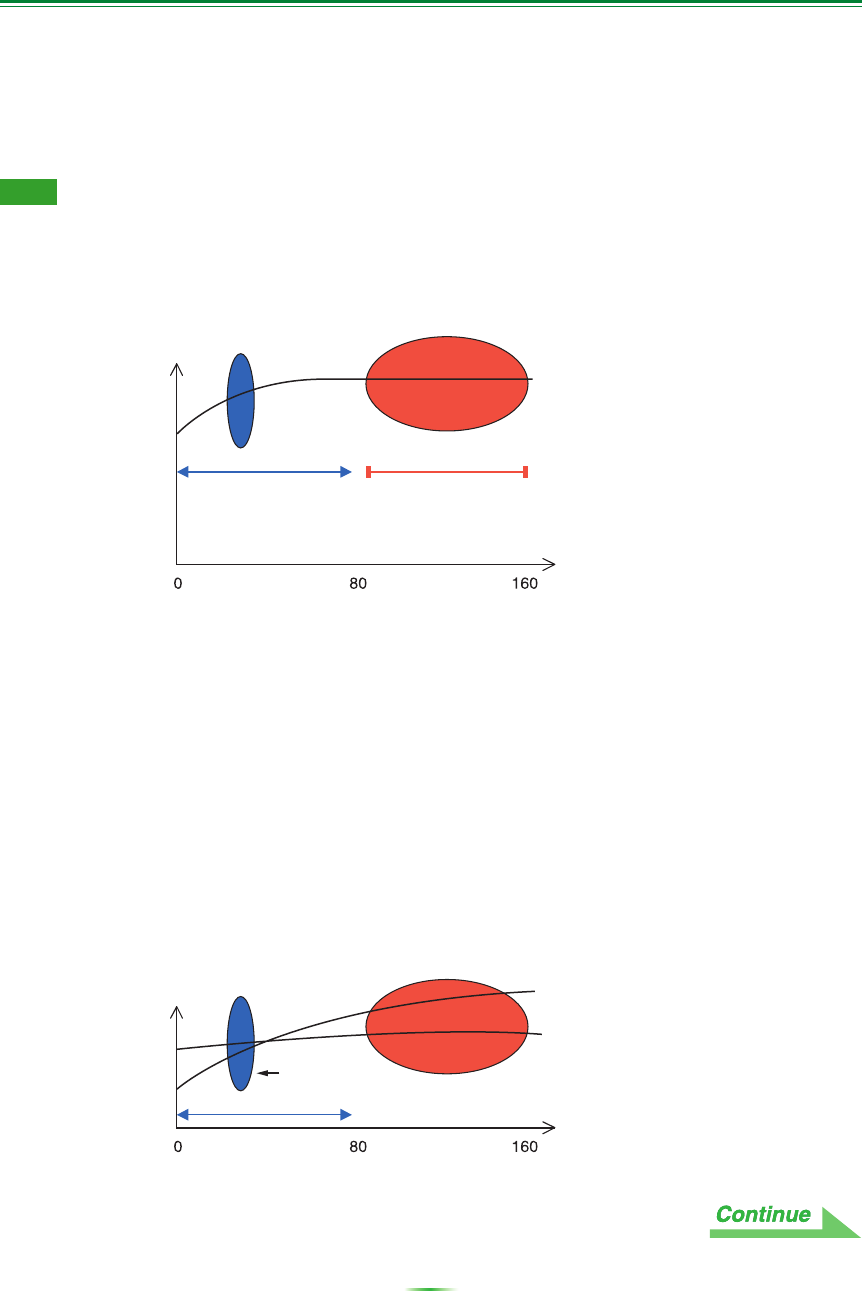
15
How to Interpret the Graphs (Continued)
Deciding the time period for Advanced EQ Setup calibration
When you are using Acoustic Cal EQ calibration (instead of EQ Professional calibration), the input data
from the microphone is analyzed at fixed time periods from 80 to 160 msec (the red area in Figure 1).
Advanced EQ Setup allows you to choose a point (20 msec width) in the range from 0 to 80 msec (the blue
area in Figure 1).
Note
You can specify the time period setting using the “Advanced EQ Setup” in the “EQ Professional” sub-menu
(in the “Manual MCACC” menu). This setting is not required if you’re satisfied with the results of the “Auto
MCACC” setup (For details, see pages 39 to 41 in the Operating Instructions).
Figure 1 Comparison of microphone data acquisition time periods
To decide the time period for Advanced EQ Setup calibration, view the graphs of the measured reverb
characteristics, and refer to the following three patterns.
Pattern 1: Different reverb characteristics for high and low frequencies
In rooms with reverb characteristics like those shown in Figure 2, lower frequencies often seem overly
reverberant compared to higher frequencies (i.e. the room sounds ‘boomy’). If you calibrate the receiver
using the Acoustic Cal EQ setting, data will be acquired in the 80 to 160 msec range (the red area of
Figure 2). The analysis concludes that low frequencies are too loud and high frequencies are too soft, so it
adjusts the equalization curve to strengthen high frequencies. In fact, however, the high frequencies may
already be loud enough if measured within 40 msec, which is the time it takes for sounds coming directly
from the speakers to reach your ears. Therefore, the Acoustic Cal EQ may result in a room where high
frequencies sound shrill. In cases like this, setting the time period for Advanced EQ Setup to 30 to 50
msec (the blue area in Figure 2) to adjust for sounds coming directly from the speakers can flatten the
frequency response for direct sounds (including initial reflections) and give a better-balanced sound
field.
Figure 2
Level
(dB)
Acoustic Cal
EQ Professional
calibration range
(selectable points)
Acoustic Cal EQ
calibration range (fixed)
Time (in ms)
Level
(dB)
Time period
point to be
selected
Low frequencies
Time (in ms)
High frequencies


















